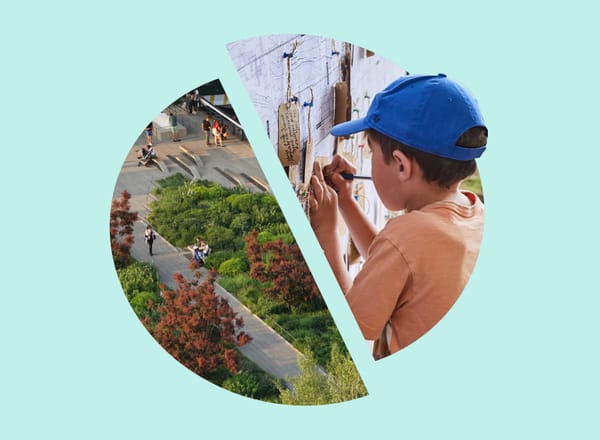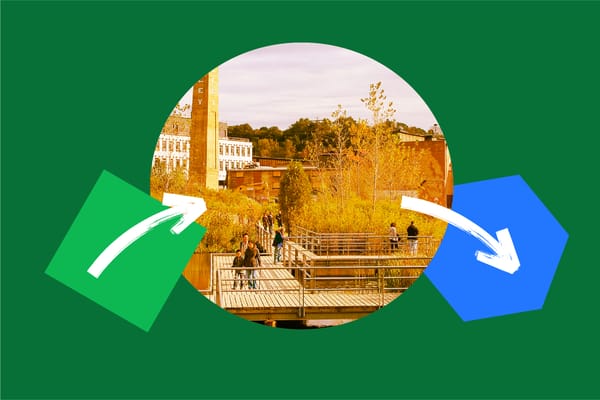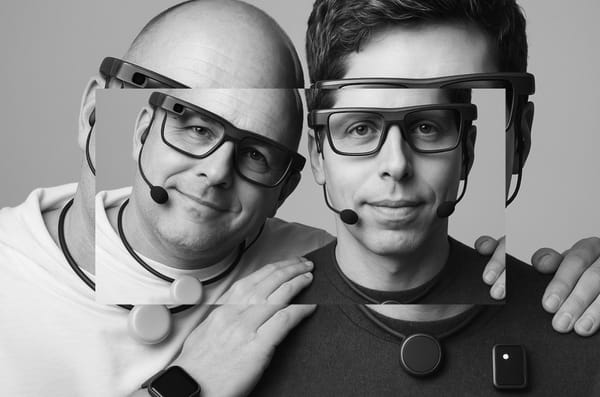Deb Chachra
On infrastructure as “care at scale” and our abundant-energy future
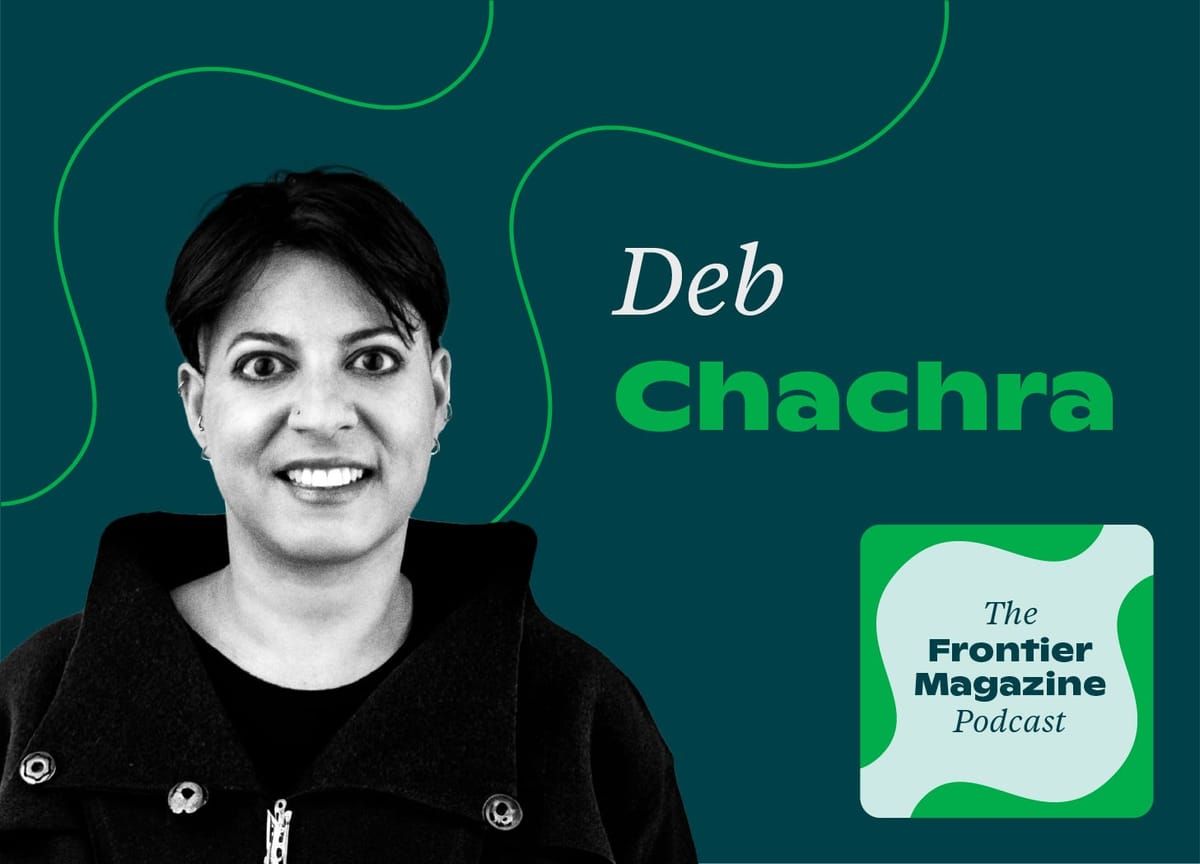
Episode Transcript
Deb Chachra: We, you, me, anyone who’s alive today, we have the opportunity to not just live through, but contribute to a species-wide transition from struggle to security, from scarcity to abundance. We can be the best possible ancestors to future generations, putting them on a permanent sustainable path of abundance and thriving.
Brian Sholis: Hi, I’m Brian Sholis, and this is the Frontier Magazine Podcast, where I interview artists, writers, technologists, architects, and other creative people about their work and the ideas and ideals that inspire it.
Deb Chachra is a materials scientist, a professor of engineering, and a writer. I’ve followed her writing and her on social media for the better part of a decade, reading with admiration as she uses her scientific expertise as a basis for comments on the culture of technology—and on North American society more generally. Those who have followed Frontier Magazine from the beginning will recognize her name because I quoted her in my introductory editor’s letter.
I find Chachra’s work so appealing not least because she has steadfastly insisted that we can and should do more to care for each other. She makes this argument by discussing infrastructure—the frequently invisible collective systems that enable us to do what we do. These systems demonstrate what she called, in a 2021 essay, “care at scale.” Now she has gathered that line of thinking in a beautiful, persuasive, heartening new book, How Infrastructure Works: Inside the Systems That Shape Our World. It’s coming out tomorrow and, as you can imagine, I highly recommend it.
You can learn more about Frontier Magazine and subscribe at magazine.frontier.is. Thanks for listening. Now, to give you a sense of what you’ll encounter in How Infrastructure Works, here’s my conversation with Deb Chachra.
BS: I wanted to begin with two context-setting questions. And the first is the most basic: can you give us an overview of your book How Infrastructure Works?
DC: [Laughs] It is a book that is what it says on the tin. It is a book about how infrastructure works. For the last couple of years, I would say I’m writing a book about infrastructure. And the next question would always be, “Oh, what kind of infrastructure?” And I would be like, “All of it?” Because it really is about what these systems have in common in terms of being about matter and about energy and about networks and about our bodies, and then the way that we build them to be collective systems to give us individual agency. So it really is about the commonality between these systems, where they came from, what they are today, and what some possible paths into the future might be for them.
BS: That’s such a big-picture question and a really big subject to chew on for the course of a book. Maybe we can ground that a little more narrowly by asking you to kind of look around the room and tell me a little bit about what endpoints or aspects of infrastructure that you can see around you.
DC: Okay, excellent. So the focus of the book really is our networked technological infrastructures. People use infrastructure to mean a lot of different things. It’s kind of everything that you take for granted that supports the thing that you're doing. But the focus of this book is really on what we think of as sort of basic utilities: water, sewage, electricity, things like natural gas, as well as telecommunications and transportation. Things that are really rooted in technology, rooted in physical reality.
BS: I think that those things have a tendency to escape our attention or recede into the background in part because of their ubiquity, but then also because, at least in the context where you are, in greater Boston, Massachusetts, and where I am, in Toronto, their reliability. We are able to focus our attention at a scale that’s commensurate with our social lives. And one of the things that I find so fascinating about this book is that it escapes that middle register and that you kind of toggle between a macro-scale view and then a microscopic view.
DC: On the one hand, we tend to think about infrastructure as these giant global systems, right? You think about huge train stations or you think about satellites or telecommunications or you think about shipping containers coming from the other side of the world. And, on the other side, there’s all of the pieces of our infrastructural systems that we touch, not just every day, but every hour, practically every minute of every day. If you just look around whatever space you’re in, you’ll almost always be able to see the nodes, the points of connection to these systems. And they’re all kind of small, they’re all kind of on the scale of your body. So think of the faucet on a tap and the drain that goes to the sewage. Think of the power outlets in your home or the light switch, or even the lights themselves; they’re connected to that network.
And so we have this kind of dual mode where, on the one hand, we’re interacting with these systems constantly at the scale of our bodies and not really thinking about it that much. And, on the other hand, we have an understanding that these are gigantic, globe-spanning systems, with everything that comes from that. Part of the idea of the book is to actually help people move back and forth between what’s around me and what I touch every day, and using that to get more of an understanding of the bigger systems.
BS: I was particularly intrigued by the story of the visit to your father’s family when you were, I think, nine years old and what that revealed to you about the infrastructure that you had taken for granted up until that point.
DC: So my parents moved to Canada in the late ’60s and I was born a few years later in Toronto. As part of the generation of immigrants that started when civil aviation became a thing, you know, this wasn’t you get on a ship and you cross the ocean and it takes weeks and then you never see your family again. My parents relocated to Canada and then we fairly regularly went home to visit their family.
When I was nine and again when I was sixteen, I lived in India for some months. We tend to take our infrastructural systems for granted. That’s kind of what they’re for, right? They’re supposed to be the thing that we don’t think about every day. So we can think about all of the things that we want to do. Being someplace else immediately reveals different ways of how these are handled. Going from a place like Canada, which had the sort of full-stack, highly reliable, highly energy-intensive infrastructure, to a place where the infrastructure wasn’t quite as developed for the population that was using it, meant that those systems were visible to me. In Bhopal, where my father’s family is from at that time, we had water for an hour a day in the morning, an hour a day in the evening, which meant that we needed to collect it for use in between.
It was potable water and it was delivered to our house, but it wasn’t up to the same environmental or water-quality standards as I was used to in Toronto. We had electricity to our house, but it tended to be sort of brownouts or blackouts in the afternoon, when there was a lot of power draw on it as people were using fans and coolers against the heat. That lack of capacity on a daily basis meant that I became aware of infrastructure in India, and therefore I became aware of infrastructure back at home in Canada.
These systems are built for the benefit of people collectively, but there’s an unevenly distributed set of benefits and an unevenly distributed set of harms. And unsurprisingly, those distributions follow existing power dynamics.
BS: I would say that bare consciousness, that awareness, in your own telling, didn’t really evolve into a kind of political or social consciousness until your adulthood. You describe only realizing and moving beyond a sense of wonder at all the infrastructure around you once you get into your twenties and begin to think about concepts like externalities or the unfair distribution of resources. You have a section in there called “mea culpa.”
And I have my own mea culpa to admit to. You’re in Boston now and I lived there for years as a young man and spent two of those years in a neighborhood called Jamaica Plain near the Orange Line subway. My station was Stony Brook. But it’s not a subway at Stony Brook, it’s an outdoor train. And there’s a very specific reason for that, one that gets to the idea that infrastructure is politically negotiated.
DC: One way of thinking about our infrastructural systems is that they are networks that bring resources to where they’re used. And so a piece of that is we need to make decisions about how we’re gonna use them. And because they’re collective systems, these decisions are made collectively. And that of course means who’s making the decisions [is] who’s intended to benefit, but also many of these systems have harms of various sorts associated with them.
I’m sure that many people listening are familiar with this idea that urban highways were often placed in neighborhoods that are seen as poor or undesirable. In the U.S. that meant that they were often placed through African-American neighborhoods. This pattern was repeated over and over again across the United States. And to this day, this is an ongoing issue: that the noise and the pollution of freeways, as well as the disruption to existing neighborhoods, was inequitable in its distribution.
So, you know, Brian, you talked about the Orange Line subway and the Stony Brook stop, and there’s a subway and a train there. And what is not there is a highway, because that corridor was originally slated for a highway that would go out of the city of Boston. And that highway was never built because, by this time, in the late 1960s, there was an organized civil rights movement and an organized movement of people who were interested in the urban life of cities that resisted putting in the highway. Massachusetts actually went to Congress and they changed the funding that was provided to say instead of building highways, we’re gonna use this funding to build transportation in general. And that means that today, there’s actually a rail corridor and a subway and a linear park on the land that had been slated for the highway.
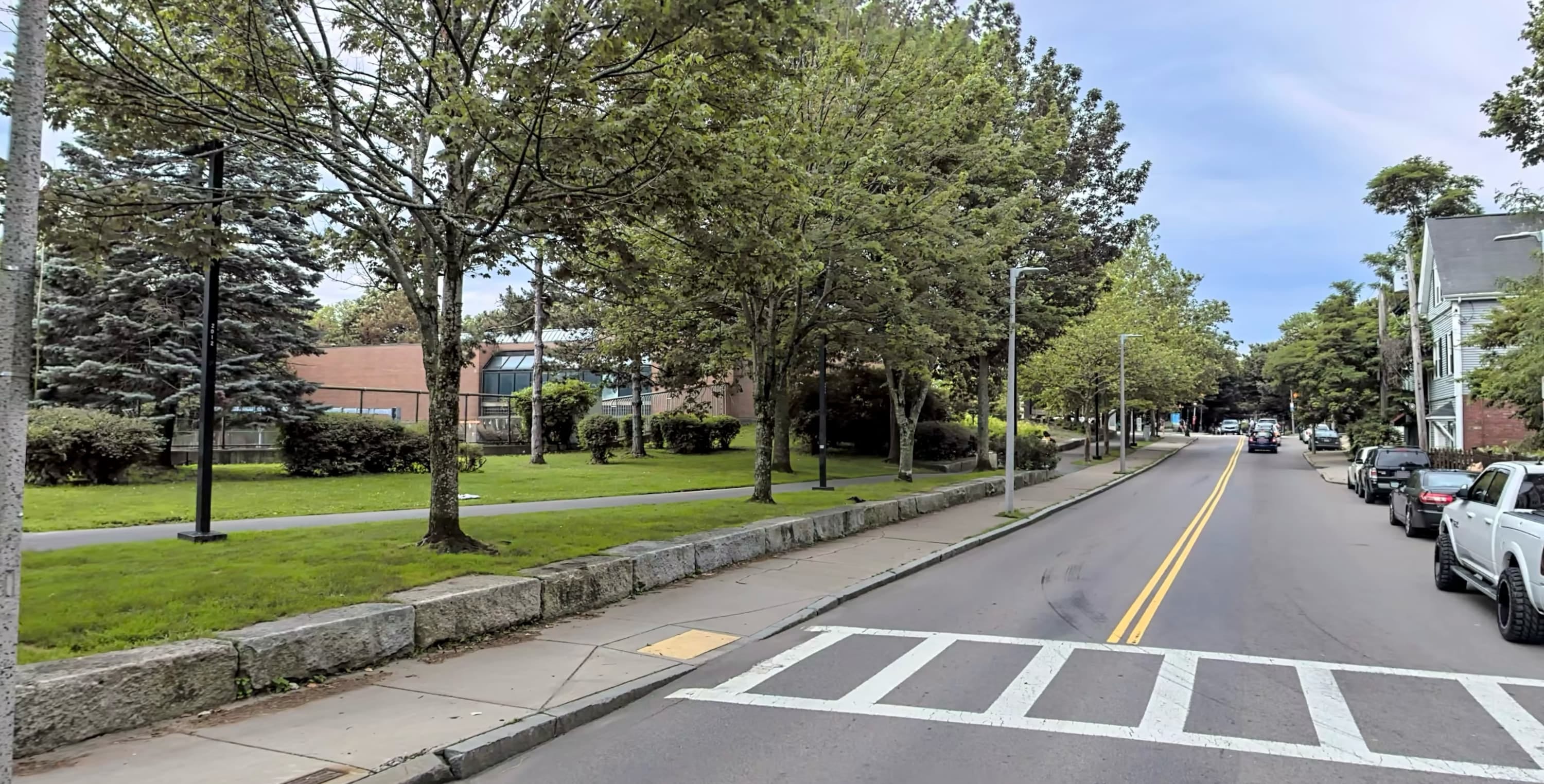
It took a concerted social movement to resist the highway and to make that change. It did not happen by accident. It did not happen because people figured things out better. It took a lot of on-the-ground resistance.
That really gets us [to] this idea that these systems are built for the benefit of people collectively, but there’s an unevenly distributed set of benefits and an unevenly distributed set of harms. And unsurprisingly, those distributions follow existing power dynamics.
BS: Thanks for that important historical context. I guess my invocation of the Orange Line subway nudged us away from the story of your political and social awakening. So what projects, or what encounters you had as a young adult, nudged you further along the path first revealed to you when you visited India as a child?
DC: For me, the real gradual dawning insight was that I had always been the beneficiary of these systems. These systems actually worked great for me. Growing up in a place like Toronto, I always had access to clean water. I always had access to good transportation. I always had incredibly reliable electricity. I have access to entire telecommunication systems that did not exist when I was a kid in the form of the internet.
It wasn’t until I started digging into these systems that I really began to understand that there were harms associated with them, and, in particular, that those harms were unevenly distributed. It dawned on me that these networks that are designed to bring resources to where our bodies are, are also of course extremely effective at both extracting resources from other places and at displacing the negative effects onto other people or to subsets of people. This was not a side effect. This was the actual nature of these networks. But it took me a long time to figure it out because infrastructure hides itself. But also because this kind of power and privilege also hides itself. If you’re the beneficiary of these systems, it doesn’t really occur to you that other people have different experiences.
BS: It’s tough to see something that you were born into.
DC: Right? We only notice it when it fails us. If you’ve always been a member of the group that it was designed not to fail, it makes it that much harder to see.
BS: Mm-hmm, mm-hmm. Near the center of the book is a story about a trip that you took to Wales to visit a place that’s known colloquially as Electric Mountain. I took that story and that project itself to be one that is both something that you can admire as a scientist and as an engineer, but then also, in the decision to build it in the way they did, one that was relatively politically and democratically minded. Can you please tell us a little bit about that project and the people it benefits?
DC: I think it’s really wonderful, both technologically and socially. It’s a pump storage hydroelectricity station. This is a really common mode that’s used to essentially have a large amount of hydroelectricity on tap. And the way you do this is you have a reservoir, you keep the reservoir full. If you suddenly need more power, then you can just open the valves and let the water run through the generator and produce more electricity.
In the case of Electric Mountain, there’s two lakes that are in a region of Wales that’s near Snowdonia National Park. There’s an upper lake and a lower lake, and they serve as a reservoir and a sump with a generator in between, and it can be used to add extra power when they need electric power. I particularly love the story that one of the reasons why it was made was because when it was designed, in the 1960s and ’70s, everybody watched TV, which means that everything started at the same time and finished at the same time, and enough British people would get up after their TV show ended and go to the kitchen to make tea that it was worthwhile having this extra power on tap to account for that power draw.
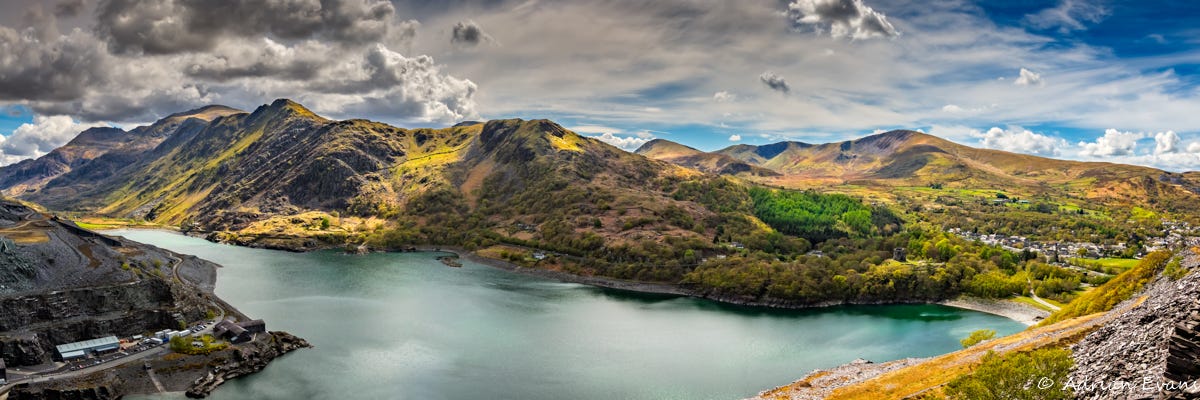
But what I think is actually most remarkable about Dinorwig is that the group of people who benefit from it and the group of people who would be to greater or lesser degree harmed by it are essentially the same. It meant that there was an incredible amount of effort made to mitigate the harms. I mentioned that Dinorwig, Electric Mountain, is adjacent to Snowdonia National Park, which is an area of outstanding national beauty. And you would not know that there was a huge electricity facility there because all of the power lines are buried. There was actually a population of arctic char in the lakes that were, I presume, stranded there during the last ice age that were relocated. As I said, the thing that’s most remarkable about it is this recognition that we’re building this to benefit people and we need to mitigate as many of the harms as we can so that the British people can enjoy this piece of landscape.
BS: It requires thinking more holistically than is typically the case. That’s at the center of the book. And if the subtitle of the book as a whole is “Inside the Systems that Shape Our World,” I would maybe suggest that the back half could be something like “reshaping our systems from the inside,” which refers to both kind of the incredible maintenance work that they require, but then also the opportunity that climate change presents to rethink how we do these things, how we rethink our infrastructure.
DC: Well, first of all, climate change is absolutely a threat to infrastructural systems and infrastructural systems are a major contributor. These networks are embedded in our landscapes and these landscapes, which have been stable for a really long time, are no longer going to be stable because of climate change, right? We’re already seeing a greater amount of variability, more extreme weather events, and this is likely just the beginning of what’s gonna happen.
The first thing to take from this is that we cannot just treat our infrastructure as we have all along. We built these systems assuming that we have a stable landscape and that part isn’t true anymore. So we absolutely need to rebuild these systems.
Everyone, everywhere in the world has access to all the energy they need now that we figured out how to harness it. This has the potential to change everything.
BS: Do you say that the infrastructure behind the infrastructure is now no longer stable?
DC: If we think about our infrastructure as reliable, the infrastructure for infrastructural systems is the ecology and climate of the landscape. So if you build for, you know, a hundred-year storm and now those hundred-year storms are coming every other year, that means you need to rethink your engineering.
So these are the challenges that we’re facing. But the opportunity is actually twofold. One is that natural disasters become something other than weather events because these systems fail. A natural disaster is a natural disaster because you have a power outage or because your water supply doesn’t work. So if we take the opportunity to build these systems to be more resilient in the face of these changes, they also become our most powerful tool for helping us navigate climate change, to basically go from natural disasters to extreme weather events we can deal with.
I live in Boston and you live in Toronto. So we have snow storms all the time, right? A snow storm is not a natural disaster. It’s just a weather event, right? Our systems are designed for that. That’s the first set of opportunities: to rebuild these systems for that world that we now all live in.
The second set of opportunities: What has very quietly changed over the course of the last few decades is that it's now possible to generate all of the energy that we need through renewable technologies. This wasn’t true when you and I were kids. The only way that you could get energy was by combustion, by setting things on fire and harvesting that energy. We are extremely accustomed to thinking of energy as something that is scarce, something that you need to pay someone else to get, and something that is going to produce greenhouse gases. That is actually not true anymore. We all know about wind power and solar energy. And there’s things like geothermal. And we talked about the granddaddy of renewable energy, hydroelectricity. What this means is that we now have the technologies to generate all of the energy that we need without passing through combustion, to go directly from the energy that’s arriving on the planet and turning that into energy for our use. We don’t have to go through that intermediate step of acquiring fossil fuels and then burning them.
There’s two consequences to this. One is the obvious consequence, which is the decarbonization piece, right? It’s the one that we focus on, stopping something bad from happening. But the other piece of it is that, if we have access to energy that’s just in our local environment—decentralized, distributed access to energy—and there’s much, much more of it than we can ever use, that really changes how we think about energy as providing us with agency in the world. Now it’s everywhere all the time for everyone to use. You don’t have to pay someone who’s far away to use it.
BS: Tell me a little more about that, as I feel that arguments about how a change affects one’s pocketbook or one’s family budget, are often the most persuasive.
DC: If you drive a traditional internal combustion engine car, every time you turn the ignition, you start burning gasoline and it costs money. If you have a bike, once you make the capital outlay to have a bike, you can just get on and ride. Renewable energy is much closer to the latter than the former. That is, there’s capital costs and there’s operating costs, but there aren’t energy costs associated with using it. You don’t need to pay for it. This is why places like Niagara Falls, people looked at Niagara Falls and were like, “We need to harness that energy and use it.” So this has gone from being like, “Oh, you live close to Niagara Falls, you can get free energy,” to actually everyone, everywhere in the world has access to all the energy they need now that we figured out how to harness it. This has the potential to change everything. It’s no longer that we’re gonna put a fence around a hole in the ground and pull out an infinite amount of energy in the form of fossil fuels. It’s just like, well, I live near a river. I live in a place that’s sunny. I live near an ocean. That’s the first piece.
The second piece is that it has now become possible, if you think about energy as being abundant instead of scarce, to rethink how we use stuff. We get to take that renewable energy and use it to extract those materials and reuse them. Every lithium battery, we can extract the lithium and reuse it. Every bit of steel, every bit of plastic, right? Instead of burning it or burying it, pull out those molecules and reuse them.
This is an unprecedented historic shift. And we haven’t really wrapped our brains around what this means. Because through all of human history, energy has been the thing that’s been scarce. Matter, that stuff you can just use, you can just dig it out of the ground and you can just dump it someplace else, it’ll be fine. We’re now hitting the limits of that, right? So we can think about this not as “We need to decarbonize all of our infrastructural systems to prevent catastrophe from happening.” That’s, in a weird way, a side effect. The thing we actually get to do is to harness all of the energy that’s available in our environment, collectively, so that everybody has access to that kind of agency that we’re accustomed to having in the global north. And to do things like closing these materials loops so we don’t dump things into the atmosphere, to do things like desalinating water, which is an incredibly energy intensive process, to make sure that everyone has secure access to household water. There’s a host of possibilities that become possible once we think of these systems as collective systems that run on abundant renewable energy rather than collective systems that rely on combustion.
BS: It requires an intellectual inversion to go from “solving this problem is going to create more of the problem, can we outrun it?” to “solving this problem is easy because there is infinite power.”
DC: And I would just like to say, I do not think it’s an easy problem. The fact that we have wind power and solar panels, all of this is because of concerted policy decisions, investment, and a serious amount of work. But now we know that we have the technologies we need. It’s early days yet. There definitely are still questions to be solved. But we are now past the tipping point where we can start thinking of it as a virtuous circle, that as we switch to renewable energy, we can now do more and more of these things that previously seemed really challenging, rather than thinking of it as a vicious circle. We now actually can see what the other pathways are. We have the technologies we need to move there. Now is the moment where we are starting to work together to move to these new pathways.
BS: I take your point that the challenge is Herculean. And as a non-scientist, I think what I take heart in is that your optimism is well-grounded in your knowledge. And I think what opens up is a very enticing, very compelling vision. There is a passage near the end of the book where you start to hazard what that future might look like. Maybe we can just take a moment to read a few paragraphs and hear one vision out of the many possible worlds that this change opens up.
DC: [reading] “Rebuilding infrastructural systems to be functional means that they will be locally specific and sustainable, no longer reliant on a steady stream of gas or oil with a corresponding outflow of money and pollutants. Harnessing renewable energy effectively means it can be abundant everywhere, providing the opportunity for everyone, no matter where they live, to have access to the energy that serves as Amartya Sen described wealth: as a general purpose tool to live the kinds of lives we have reason to value. There is a possible future for humanity where we have stabilized our climate, where everyone has the energy and resources that they need to survive and thrive, where we get to connect with each other in a myriad of ways. I get to use ‘we’ in the best possible way, meaning all of humanity. Running the numbers and realizing exactly how abundant renewable energy is, and then realizing how close we are to being able to harness it, it’s an absolute game-changer. We’re accustomed to thinking about making the transition away from fossil fuels to renewable sources as ones that we are doing under duress, making a sacrifice to stave off disaster.
“But that’s not what we’re doing. What we’re doing is leveling up. We, you, me, anyone who’s alive today, we have the opportunity to not just live through, but contribute to a species-wide transition from struggle to security, from scarcity to abundance. We can be the best possible ancestors to future generations, putting them on a permanent sustainable path of abundance and thriving. And we can do it for all of our descendants, all of humanity, not just a narrow line, but we can only do it together.”
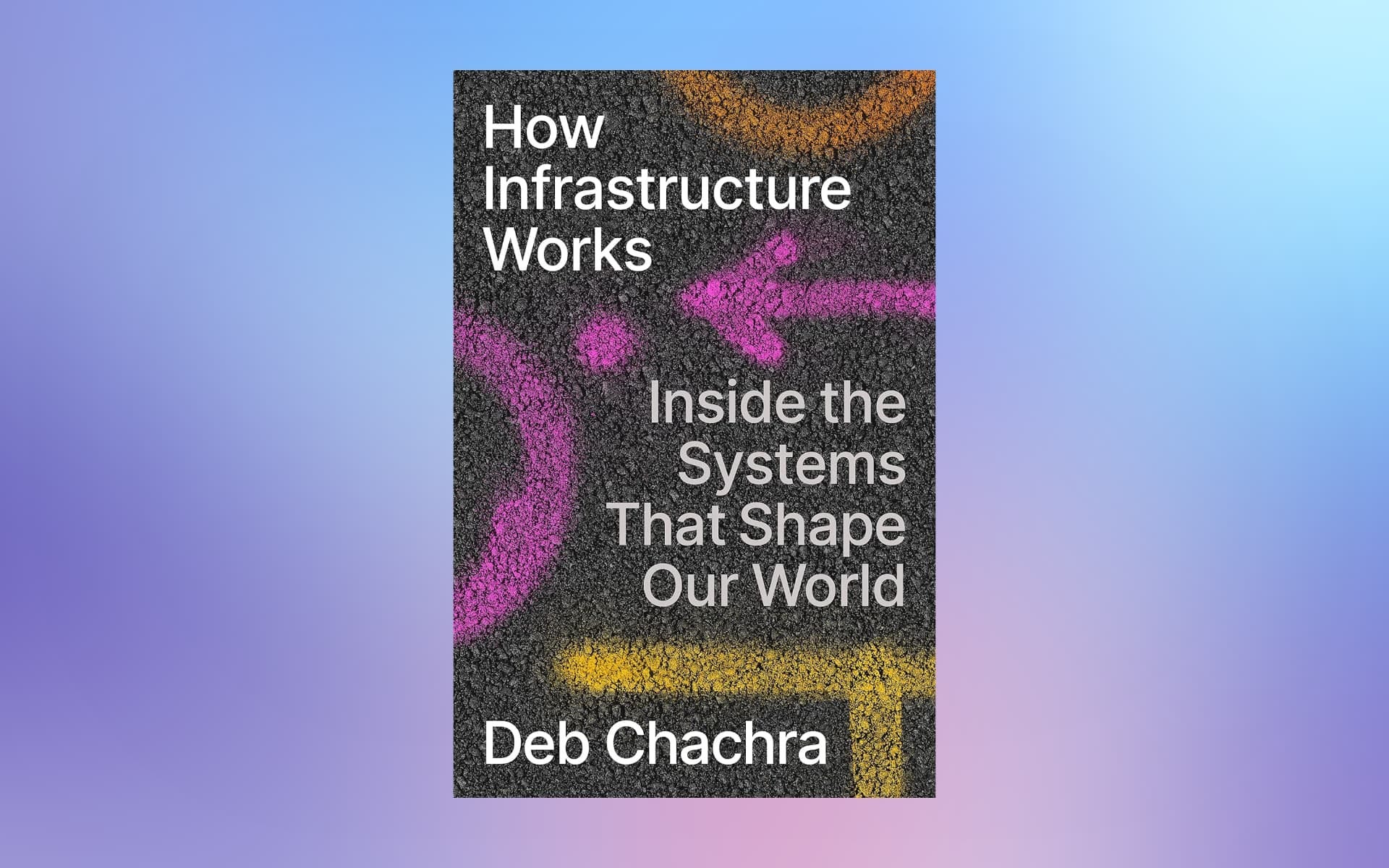
BS: And I do think that together is the key word there. Like our infrastructure itself, the project of reshaping it has to be a shared enterprise. And we must become a term that you introduce at the very end of the book, which is infrastructural citizens. Can you define that for us?
DC: We think about political or national citizenship as that we have a relationship to people by virtue of the fact that we have the same passport, we share the same flag. But the reality is that all humans have bodies and all those bodies exist somewhere on the planet and all of those bodies need resources to survive and to thrive. And typically those resources come from the land around you, whether that’s close or whether that’s far away. So we can think about infrastructural citizenship as the relationship that we have to the people around us by virtue of having bodies embedded in the landscape.
What comes with that is that we have a relationship not just to the people who are around us today, but the people who will be living in the places we live well into the future, right? Whether you live in Boston or in Toronto, there will still be people living in this place in fifty, one hundred, potentially a thousand years. We have a relationship with those people, too, because they will also have bodies in this landscape and they will also have basic needs. So the idea of infrastructural citizenship is to recognize and think about that relationship we have to other people both today and into the future.
BS: It’s a beautiful idea and it’s one that trades myths of individualism for a sense of interdependence. It’s also one that goes against a lot of common Western thinking. The kinds of people that you and I are, and the kinds of people that you and I are often speaking to, are inculcated in a kind of individualist way of thinking.
What lessons do you take from other people who are aware of, who have their infrastructural citizenship papers?
DC: So, you know, the first thing about it is that infrastructure is so good at collectively providing for our individual agency that it’s super easy to forget that our lives are enabled by these collective systems. And this is a really, really deep interdependence. And it’s a dependence with the people around us, and it’s a dependence with our landscape and common pooled resources, like water and air.
So the first piece is actually just this recognition that what we think of as our individual freedom is by and large made possible by these collective systems. The second piece of it is … I really like Amartya Sen, the developmental economist, and he studies some of the poorest people in the world. He really formulated this idea that the purpose of wealth is to give us the freedom to live the kinds of lives that we have reason to value.
This is not solving problems for other people. This is not saying you’re gonna do it in X, Y, or Z way. It’s really saying that by having, in his case, money, and, in my case, energy or infrastructural systems, you then get to choose to do that which makes the most sense for you and your community.
So I really think of those two pieces as kind of inverse for each other. So the people who live in the global North who are accustomed to having a huge amount of individual agency recognize that much of that agency is rooted in collective systems. And for the people who have never had access to the same degree of agency to recognize that the possibility now exists to to build out these systems to underpin their agency.
BS: It’s a beautiful vision, Sen’s vision, and it’s a beautiful book, your book. And I’m grateful that your book exists and I’m grateful as well for this conversation. Thank you so much, Deb.
DC: Thank you, Brian. I really appreciated being here.
Thanks for listening to this episode of the Frontier Magazine podcast. It’s the audio component of our weekly publication, which features appreciations from the forefronts of architecture, technology, culture, and education. Each issue shares new ideas about how design and creativity accelerate positive change. Everything we publish is available for free; browse the archive and sign up for new issues at magazine.frontier.is. If you liked this episode, please share it with people you know and rate us to help others discover what we’re doing.
The magazine and podcast are products of Frontier, a design office in Toronto. Here’s studio founder Paddy Harrington:
Frontier is a !design office. We believe in the expansive potential of storytelling to help people navigate the unknown to get somewhere new. We’re coming up on a decade of designing big stories in the form of strategies, brand identities, editorial products, and digital and real-world experiences that help organizations, brands, and individuals stand out and discover new creative territory. Learn more at frontier.is.
Thanks again. I hope you’ll join us for the next episode.


